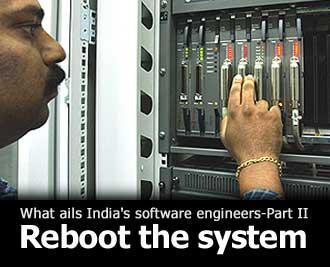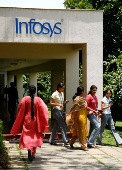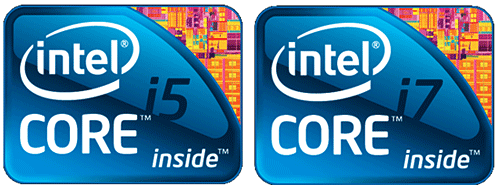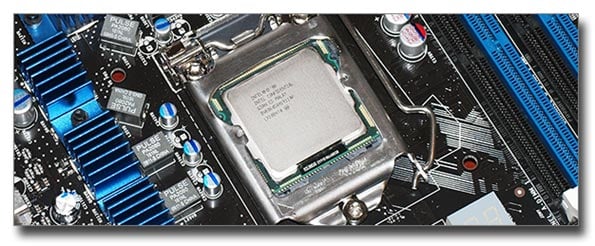The Indian development centers of Intel and Microsoft stand testimony to that. The recent launch of Microsoft's Windows 7 operating system too had significant contributions coming from Microsoft India Development Center (MSIDC) in Hyderabad.
MS launches Seven 7s to fight Windows 7 piracy
MSIDC and Windows 7
Microsoft India Development Center situated in Hyderabad is one of the largest Microsoft R&D centers outside their headquarters in Redmond, USA. This center started 11 years ago with a team of just 20 people, and over these years has grown to become a team of around 1500 employees.
MSIDC has played a key role in contributing towards components of several Microsoft products, some of which include Bing, developer tools and Windows 7.
Over the years, the MSIDC development teams have gained expertise on networking and virtualization, and that reflects on the type of components of Windows 7, they had complete engineering responsibility of. The contributions of MSIDC teams to Windows 7 are discussed here.
Should You Migrate to Windows 7?
VPN Reconnect
In this mobile world, one of the pain points that most organizations face is providing seamless connectivity to their workforce for corporate applications. Most organizations provided such applications by using VPN tunnels over Internet.
But if their employees moved out of the office network, their connection to the application would be inaccessible as their VPN connection got terminated, and even if the employee had a wireless broadband connection, he would have to reconnect and get back onto that application to continue working.
Windows 7 and Vista offer best file search
Windows 7 provides a VPN Reconnect feature, which allows a VPN connection to have multiple network paths defined between points on the VPN tunnel. This results in seamless switchover and uninterrupted connectivity, as VPN Reconnect feature automatically uses the next available path to maintain the existing VPN tunnel if the main network connection fails, and so the user's work remain uninterrupted with no connectivity outages.
This VPN Reconnect feature has been developed at MSIDC. It is standards based and uses the IKEv2 IPSec protocol. It supports additional VPN strategy which allows fallback to SSL in case IKEv2 is blocked by the firewall. It also provides support for Machine Certificate based authentication making it more secure to use.
Direct Access
For corporate users who would like to access their corporate intranet while on move over the Internet without having to configure any VPN connection, Direct Access feature of Windows 7 is the solution. Direct Access provides the end user access to the corporate network so they can have access to the resources they need even while they are on the move.
It also enables the IT administrator to have increased level of remote device management. Direct Access uses the IPv6 and its native features to tunnel and secure data over public network like Internet.
The MSIDC team has been instrumental in setting up the Direct Access Management snap-in feature in Windows 7, and provided all the management framework around setting up the Direct Access server and the policies around it. Thus, playing a key part in providing an end-to-end solution for Windows 7.
Mobile Broadband
The third networking related component that MSIDC has contributed to Windows 7 is the Mobile Broadband feature. This feature enables users to connect to the Internet from any location that has cellular connectivity. Prior to Windows 7, all telcos were writing their own connection managers, even the mobile broadband card manufacturers were writing the device drivers in their proprietary format.
This resulted in an inconsistent user experience as he subscribed from one service provider to another. The MSIDC team worked with various card manufacturers and telcos across the geography and provided them with a common API set for connection manager and driver model so that user can have a consistent experience.
With organizations moving towards mobile workforce, and even netbooks coming with an embedded wireless broadband card, the user now just has to take subscription from a wireless service provider and he is all set to work on the Mobile Broadband feature of Windows 7, taking care of the connection manager as well as device drivers.
Customers can connect via 2.5G, 3G, GSM or CDMA based cellular data services and enjoy the same experience as that available to users of Wi-Fi and other broadband technologies. The spectrum of technologies that this feature supports include GSM as well as CDMA.
Virtualization Contribution
Apart from the networking related responsibilities for Windows 7, the MSIDC also contributed towards virtualization technologies like Virtual PC and Windows XP Mode for Windows 7. Microsoft has learned from their Vista experience that several enterprises had not adopted Vista because of the application compatibility issue.
With Windows 7 though, Microsoft has tried to resolve application compatibility issues. And for any enterprise application which runs on Windows XP, but is not compatible with Windows 7, they have provide a Windows XP Mode.
This is effectively a license to run XP with Windows 7 Professional, Enterprise or Ultimate editions and allows enterprises to upgrade to Windows 7 and have their Windows XP compatible business and productivity applications working inside Windows 7 in a virtual environment.
The experience of running native XP compatible applications on Windows 7 is seamless and also once the applications are installed on XP Mode, they are published in Start Programs and on the Desktop of Windows 7, providing user with ease of access and enhancing his experience. Also the application in XP Mode starts normally and there is no Virtual Machine environment visible to the user.
Beyond Windows 7
Providing key components for Microsoft Windows 7 is not the only accomplishment for MSIDC. It is also contributing towards Microsoft's family of developer tools and technologies. The upcoming Visual Studio 2010 will have features of Test Elements and Team Lab management, which were developed primarily at MSIDC. SQL Server Compact 3.5 SP2 Beta 2, developed at MSIDC, is the latest release from the SQL Server Compact family. It is a free, easy-to-use embedded database engine that lets developers build robust Windows Desktop and mobile applications that run on all Windows platforms, including Windows 7, Pocket PC and Smartphone.















 With today's launch of their new "Lynnfield" based Core i5 and i7 800 series processors, and the accompanying P55 Express chipset, Intel's current flagship CPU microarchitecture--codenamed Nehalem--finally trickles its way down into the mainstream computing segment. Since Nehalem first landed on the desktop in the form of the Core i7 line of processors, it has unequivocally owned the performance segment of the market. They are simply the fastest desktop processors currently available, bar none. But while the Core i7 was riding high, Intel still had the established Core 2 line-up to satisfy the mainstream, though meeting market demand for a refresh here as well was obviously the end game.
With today's launch of their new "Lynnfield" based Core i5 and i7 800 series processors, and the accompanying P55 Express chipset, Intel's current flagship CPU microarchitecture--codenamed Nehalem--finally trickles its way down into the mainstream computing segment. Since Nehalem first landed on the desktop in the form of the Core i7 line of processors, it has unequivocally owned the performance segment of the market. They are simply the fastest desktop processors currently available, bar none. But while the Core i7 was riding high, Intel still had the established Core 2 line-up to satisfy the mainstream, though meeting market demand for a refresh here as well was obviously the end game.





